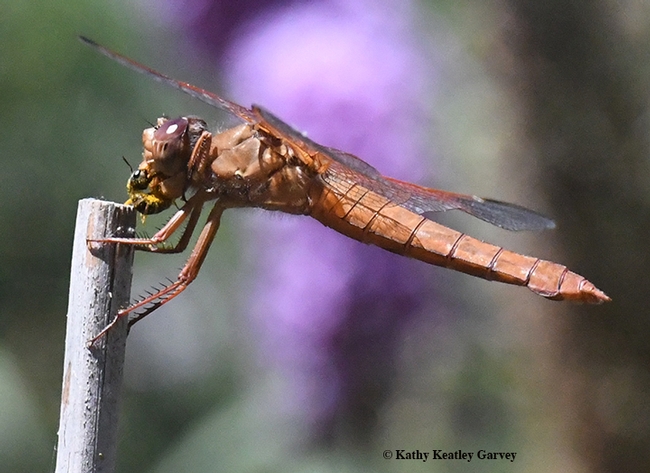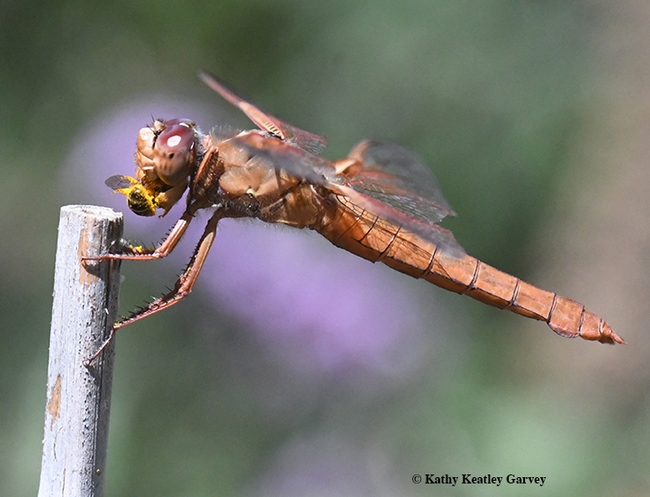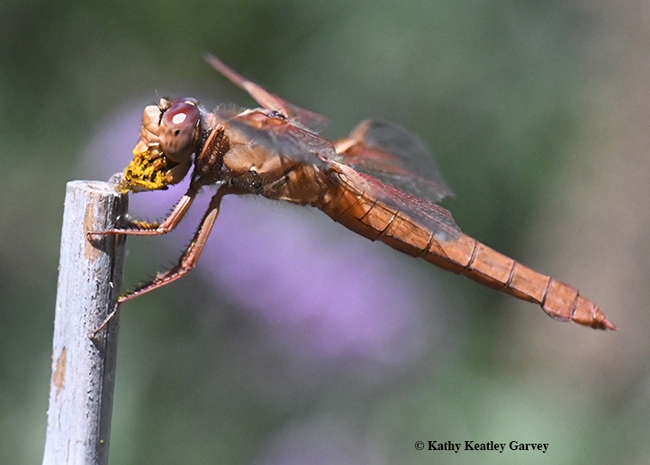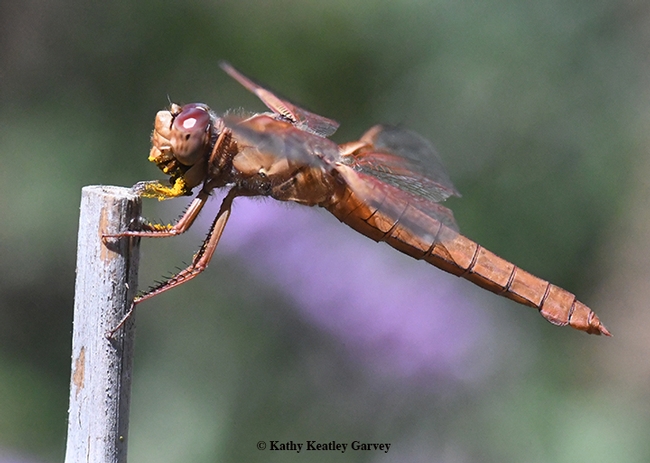
She's in Vacaville, Calif., and the garden she is visiting today is a veritable oasis of blooms: Mexican sunflower (Tithonia rotundifolia), butterfly bush (Buddleia davidii) and lavender (Lavandula). And it's filled with bees.
That's why she's here.
Just as crooks rob banks because "that's where the money" is, predators hang around pollinator gardeners because "that's where the prey is."
The predator is hungry. Ah, what's that? She glides from her perch, her wings glowing in the morning sunshine. She circles the garden and quickly returns with a pollen-laden bee in her mouth.
She ignores the photographer sitting a few feet from her and begins to eat.
But what bee? What bee is on the dragonfly menu?
Native pollinator specialist Robbin Thorp, distinguished professor of entomology at the University of California, Davis, identified the bee from one photography angle (second photo below): a female sweat bee, genus Halictus.
"But what species?" asked Lynn Kimsey, director of the Bohart Museum of Entomology and professor of entomology at UC Davis.
Here's another angle (first photo below), showing the head.
That's all it took. "The bee is a female of Halictus ligatus, based on the head shape, especially the pointed part of the back right side of the head," Thorp said.
Amazing. Who would know that?
Robbin Thorp, that's who.
Robbin Thorp knows bees like we know the way home. World-renowned for his bee expertise, he co-authored of California Bees and Blooms: A Guide for Gardeners and Naturalists, and Bumble Bees of North America: An Identification Guide and co-teaches at The Bee Course, an American Museum of Natural History workshop held annually at the Southwestern Research Station, Portal, Ariz. The workshop is geared for conservation biologists, pollination ecologists and other biologists who want to gain greater knowledge of the systematics and biology of bees. This year's workshop is set Aug. 21-31.
Meanwhile, the dragonfly polishes off her meal, gazes at the photographer (What, are you still here? Sorry, I don't share!), and off she goes, zigzagging over the garden.
She will be back. She's punched only one hole of his meal ticket. Many holes--and many bees--remain.
Attached Images:

A red flameskimmer dragonfly (Libellula saturata) with her prey, a female sweat bee, Halictus ligatus, as identified by Robbin Thorp, distinguished emeritus professor of entomology at UC Davis. The gender of the flamekimmer identified by Kathy Claypool Biggs. (Photo by Kathy Keatley Garvey)

The red flameskimmer dragonfly adjusts her prey, a sweat bee. (Photo by Kathy Keatley Garvey)

Beneath all of that pollen is a female sweat bee, the prey of this red flameskimmer. (Photo by Kathy Keatley Garvey)

All gone. The red flameskimmer polishes off the last of the sweat bee. (Photo by Kathy Keatley Garvey)